Every time an episode of Ahsoka lands, Fantha Tracks will be giving their responses, and here are our initial gut feelings, deep dives and thoughts on the sixth episode, ‘Far, Far Away’. Beware of spoilerific elements in here.
Mark Newbold
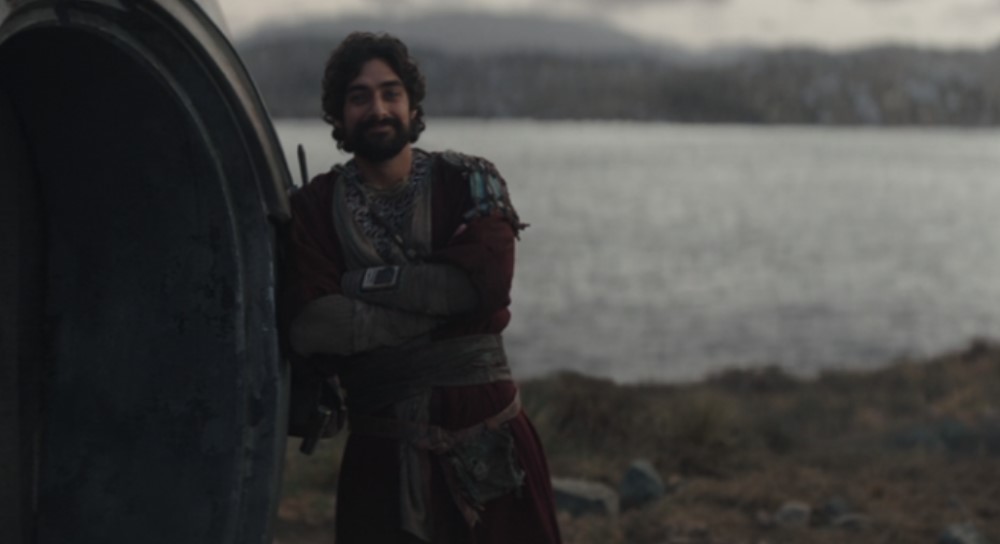 Star Wars fans live in a strange place; many yearn for the comfort of the familiar while others hope for the uncertainty of the new, but in a sandbox now over 46 years old if certain elements don’t line up with the dreaded headcanon, things can go south quickly. I’ll nail my flag to the mast very quickly and say I loved this episode, from a visual and story standpoint, but equally I can understand some fans not being quite so enamoured. This is a big leap (in many ways), but if we could only relax and follow Yoda’s instructions to “unlearn what you have learned” then the journey we’re on would be even more fulfilling.
Star Wars fans live in a strange place; many yearn for the comfort of the familiar while others hope for the uncertainty of the new, but in a sandbox now over 46 years old if certain elements don’t line up with the dreaded headcanon, things can go south quickly. I’ll nail my flag to the mast very quickly and say I loved this episode, from a visual and story standpoint, but equally I can understand some fans not being quite so enamoured. This is a big leap (in many ways), but if we could only relax and follow Yoda’s instructions to “unlearn what you have learned” then the journey we’re on would be even more fulfilling.
However…conjecture, opinion, discussion and even disagreement is the coaxium that has kept Star Wars alive all these years in the hearts of fans of all ages. Interpretation is unique to the viewer, as it is to the characters within Far, Far Away. Baylan Skoll certainly seems to be in a place of uncertainty, arriving in a realm of myth made real that appears to have shaken him. Shin senses it, and as we watch a potential fracture in their relationship – Skoll presented to Thrawn as a mercenary when we know he is so much more – we also learn more about the Nightsisters, characters we’ve known of since Battle for Endor in 1985 but over the years have followed in Dave Wolverton’s 1994 novel The Courtship of Princess Leia and more closely through Filoni’s The Clone Wars. Now we find they are from this distant galaxy – as are the purgills – and their magick which would seemingly suit the world of Willow better than the Star Wars galaxy is now given a different perspective.
Similarly Thrawn, the Chiss commander from the Unknown Regions. His story has always stood apart, battling prejudice to rise to the rank of Grand Admiral and becoming one of the Emperor’s most trusted commanders, but now seconded in this distant galaxy with his iconic flagship the Chimaera and an army – dwindling though it may be – of Night Troopers, his connection to the Nightsisters (presumably a reciprocal arrangement) and his plans to return to the prime Star Wars galaxy hangs heavy with magick and mysticism. Peridea was once a place of myth spoken in hushed tones by the Jedi Order – that’s very much not the case now.
Visually, this is a treat, the image of the Chimaera hovering above the henge on Peridea a striking image, while the designs thoughout are incredible. The Kintsugi of the Night Troopers are instantly eye-catching, evocative of Kylo Ren’s smashed mask in The Rise of Skywalker, while Thrawn’s captain of the guard Enoch is such a surprising reveal he instantly supplants Marrok as the shows most visually striking foe. It’s hardly a shock that Thrawn has adapted and positioned himself in such a worrying manner, and equally it’s no surprise that Ezra Bridger has made friends and carved a life for himself with the diminutive Noti, hermit crabs who hide under their shells when startled, waiting patiently but perhaps not entirely confidently for a rescue which arrives in the form of Sabine, who has risked everything – literally the fate and safety of the galaxy – to find him. What his reaction to that bold/reckless gambit will be we can only imagine, but as Ahsoka and Huyang approach and Thrawn makes clear their oders to destroy with extreme prejudice, next weeks episode is set up to be an even more impressive endeavour.
Ross Hollebon
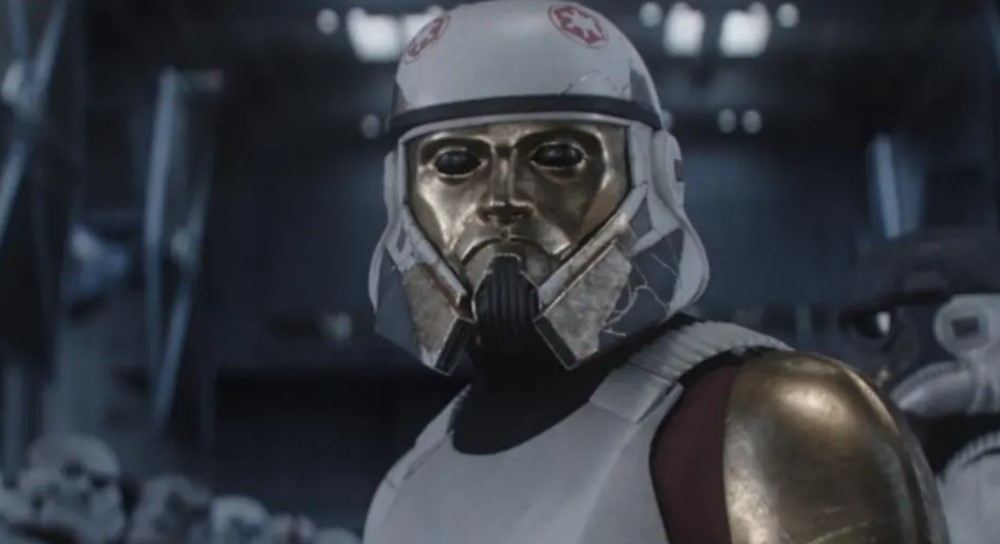 Fables. Fairy tales. Myths. Legends. Stories. They are all based on a truth or element of human nature from some point in time, apparently even in the Star Wars galaxy. How big of a role did trusted storyteller, Huyang, from the Jedi Temple, play in the formation of youngling awareness? Did Huyang encourage the current mindset of former general and Jedi Baylan Skoll, arming the former padawan with powerful knowledge based on the stories he told—namely History of the Galaxy, parts 1, 2, and 3?
Fables. Fairy tales. Myths. Legends. Stories. They are all based on a truth or element of human nature from some point in time, apparently even in the Star Wars galaxy. How big of a role did trusted storyteller, Huyang, from the Jedi Temple, play in the formation of youngling awareness? Did Huyang encourage the current mindset of former general and Jedi Baylan Skoll, arming the former padawan with powerful knowledge based on the stories he told—namely History of the Galaxy, parts 1, 2, and 3?
This episode, primarily on the planet Peridea, is masterful and thrilling with the return of Thrawn, Ezra Bridger, and three Great Mother Nightsisters. We are introduced to Night Troopers (are they similar to Marrok?), Enoch–Thrawn’s gold-masked captain of the guard, violent nomads, howlers, and Noti—the tribe of small creatures with hollow rocks on their backs who roam the plains of Peridea with Ezra, but it is the storytelling and moments of reflection and wonder that appear to be elements of a bigger story that made the biggest mark on me.
Ahsoka tells Huyang that she remembers the “star whales” from the stories he would tell the younglings at the Jedi Temple, and from the aforementioned book series her preference of, “One being the best, of course.” Not that anyone in any fandom would ever argue over which offering was the best.
Dave Filoni’s writing for the episode also includes a not-so-subtle nod to a major influence of Star Wars shows for both himself and George Lucas. Lucas had previously shared that the animated film, Princess Mononoke, written and directed by Hayao Miyazaki for Studio Ghibli and released in 1997, helped inspire The Clone Wars and The Mandalorian.
 In Part 6 of Ahsoka, Baylan Skoll speaks the line, “This is a land of dreams and madness.” Mami Sunada wrote and directed the documentary film, The Kingdom of Dreams and Madness, focusing on Japan’s Studio Ghibli’s filmmakers Hayao Miyazaki, Isao Takahata, and Toshio Suzuki. A fitting nod from Filoni to some of his heroes.
In Part 6 of Ahsoka, Baylan Skoll speaks the line, “This is a land of dreams and madness.” Mami Sunada wrote and directed the documentary film, The Kingdom of Dreams and Madness, focusing on Japan’s Studio Ghibli’s filmmakers Hayao Miyazaki, Isao Takahata, and Toshio Suzuki. A fitting nod from Filoni to some of his heroes.
Baylan immediately continues, “Children’s stories come to life…” from a galaxy whose stories are only considered folktales of “some ancient past, long forgotten.” Yet here he and Shin Hati stand on a new henge, where his less-experienced apprentice claims, “Sometimes stories are just stories.”
The elder Force-user goes on. He talks of growing older, paying attention to history and its inevitable cycles of a quest for power. But he is not interested in such fleeting power, he seeks the “beginning.” And the beginning can happen on Peridea, “If the old stories are true.”
I’m curious, heading into the final two parts of this immediate story. Will Baylan, if they encounter one another, remember Huyang, the Jedi temple storyteller and lightsaber-building teacher? What, if anything, might the former Jedi come to realize he shares in common with Ahsoka—should they meet again, especially if trapped together on Peridea?
Eric Onkenhout
 What else can be said about Star Wars: Ahsoka? It’s received praise from critics and fans alike. It’s done the unthinkable and brought Star Wars fans together. Mostly. Entering the sixth episode, Far, Far Away, there was already loads of hype stemming from the previous episode, and it did not disappoint. Live-action Thrawn finally appeared 32 years after making his Legends debut in Heir to the Empire.
What else can be said about Star Wars: Ahsoka? It’s received praise from critics and fans alike. It’s done the unthinkable and brought Star Wars fans together. Mostly. Entering the sixth episode, Far, Far Away, there was already loads of hype stemming from the previous episode, and it did not disappoint. Live-action Thrawn finally appeared 32 years after making his Legends debut in Heir to the Empire.
It’s easy to hand the majority of the praise to Dave Filoni, who deserves it. But let’s not forget Kathleen Kennedy, the actors, writers, and all the effect specialists. It’s a team effort. Speaking of the effects, I loved how the opening shot in hyperspace reminded me of Star Trek: The Motion Picture. Although much shorter and less boring.
Hearing Huyang say, “A long time ago in a galaxy far, far away,” absolutely blew my mind. I nearly cried. I understand most folks will take Parts 1, 2, and 3 as the Prequels, OT, and Sequels, but I believe it’s likely hinting at the forthcoming Dawn of the Jedi movie. A lot of this is. The Prime Jedi is the new symbol for that era. The Seeing Stone in The Mandalorian and Huyang’s presence in Ahsoka all point to the Dawn of the Jedi.
Peridea is where Thrawn and Ezra have been; at least, this is where they were found. It’s also where purgills migrate to at the end of their life. Peridea was an extragalactic planet located in a distant barred spiral galaxy. Peridea was the ancient homeworld of the Dathomiri and the center of their Witch Kingdom, which eventually collapsed.
Jennifer Getzinger directed this episode, and she did a phenomenal job. Her background also includes being a script supervisor for film and television. She has been nominated for three Directors Guild of America Awards for directing the Mad Men episodes.
On Peridea, Morgan, Baylan, Shin, and Sabine land and meet three Nightsisters, one of whom is called the Great Mother. Baylan calls Peridea the land of dreams and madness. Where children’s stories come to life. Baylan is fascinating. He is not evil. In fact, he wants to bring an end to the cycle of war. Dooku was not evil, but he felt more evil than Baylan. They both got fed up with the Jedi’s corruption and the weakness that allowed it to happen. However, Dooku was corrupted by Sidious. Baylan did not suffer the same poison.
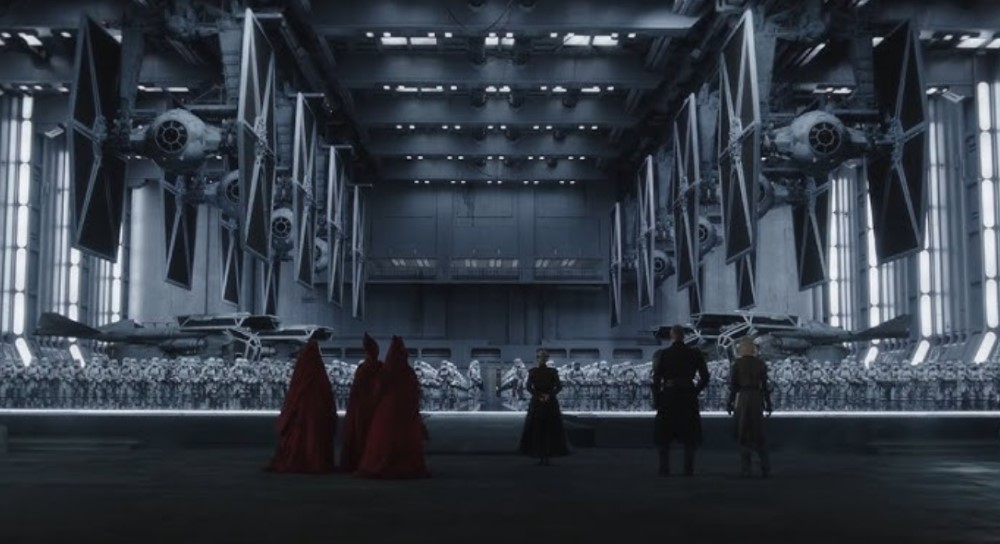 Thrawn’s ship arrives with hundreds of Night Troops wearing old stormtrooper armor that’s scuffed up, cracked, and full of blaster holes. It remains to be seen who or what is underneath. Thrawn’s troops are led by Enoch, the Captain of his Guard. His helmet has a striking face, like something from the Roman Empire. It also looks like pre-Phasma armor.
Thrawn’s ship arrives with hundreds of Night Troops wearing old stormtrooper armor that’s scuffed up, cracked, and full of blaster holes. It remains to be seen who or what is underneath. Thrawn’s troops are led by Enoch, the Captain of his Guard. His helmet has a striking face, like something from the Roman Empire. It also looks like pre-Phasma armor.
Thrawn plays a game with Sabine, allows her to leave, and even gives her a howler, a wolf-like creature with a reptilian face. Later, he’ll order Baylan and Shin Hati to track her and Ezra down and kill them both. While searching for Ezra, Sabine gets attacked by bandits but survives using her lightsaber. Sabine’s howler accidentally discovers a group of native Noti, crab-like people who lead her to Ezra.
There are still so many questions to be answered. Why couldn’t Thrawn return from Peridea? Why didn’t Thrawn have his troops kill Ezra? What’s up with the Night Troops?
Lastly, I really loved the reference to Bokken Jedi. This is another Japanese reference that has been plenty in this series. In-universe, Bokken Jedi refers to a person trained in the Force after the collapse of the Jedi Order. Unfortunately, there are only two episodes left of Ahsoka. It’s been edge of your seat watching the entire series. Is it Tuesday yet?
Jen Sopchockchai Bankard
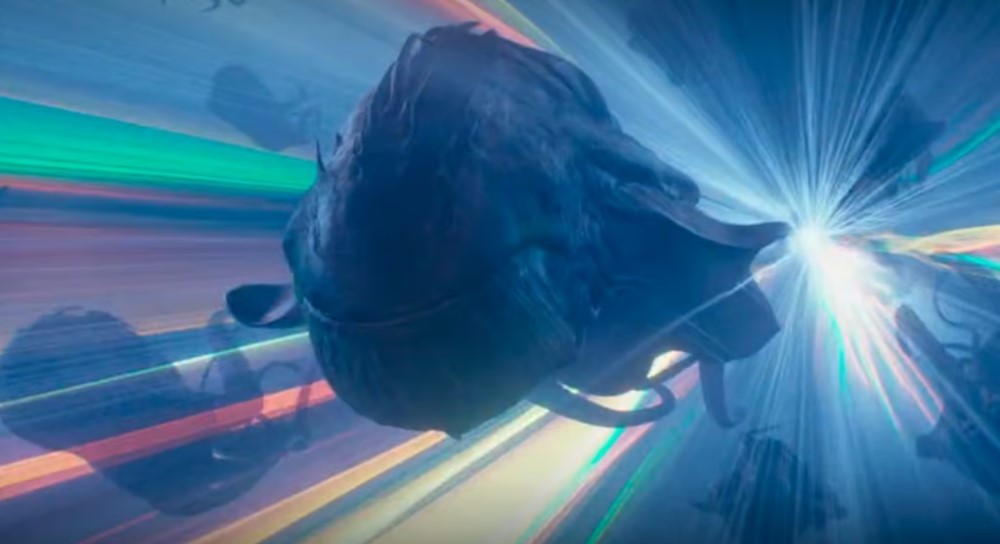 I want to first acknowledge that this episode had huge moments: Grand Admiral Thrawn made a grand entrance that left me shaking in my perfectly-framed-in-close-up boots, and the beloved street rat turned Jedi, purrgil pal extraordinaire, Ezra Bridger, finally had his long-awaited reunion with Sabine. Both were thrilling to see.
I want to first acknowledge that this episode had huge moments: Grand Admiral Thrawn made a grand entrance that left me shaking in my perfectly-framed-in-close-up boots, and the beloved street rat turned Jedi, purrgil pal extraordinaire, Ezra Bridger, finally had his long-awaited reunion with Sabine. Both were thrilling to see.
The Nightsisters or Witches of Dathomir seem like the perfect vehicle through which to infuse more mystery and mysticism into the series and Star Wars as a whole. And they reflect a very clever storytelling choice by Dave Filoni: to take a group of characters from The Clone Wars who have always kind of seemed out of place or maybe just inexplicable in the mythology of Star Wars and make the explanation as to why they are the way they are a central plot premise in Ahsoka, yet it’s never explained how exactly this magick compared to or overlapped with The Force. Did the Nightsisters have a different way of tapping into the Force? Was it another energy system entirely? To my recollection, there has never been an expository moment about it to clarify.
It was a huge revelation in the second half of the series premiere of Ahsoka that Morgan Elsbeth identified herself as a descendent of the Dathomiri Nightsisters because I had just never thought about them evolving into a more human-looking form, or forming relationships with humans that would eventually produce children like Morgan. But the even bigger revelation in this episode, I think, is that the Nightsisters are not even from this galaxy. Dave Filoni took a race with powers that didn’t quite fit in with our understanding of the Force and the galaxy and made that a key feature of them, one that would drive the plot to find Thrawn and Ezra. The Witches can be different and strange all they want without having to answer for it because they are actually from an entirely different galaxy which may have entirely different properties and natural laws.
Viewers of The Clone Wars might remember the Nightsisters’ first appearance in The Clone Wars in an arc in which Count Dooku betrays his apprentice, a Nightsister named Assaj Ventress, because she has become too powerful, posing a threat to the Emperor. After she barely survives, she returns to her homeworld of Dathomir to seek aid in her quest for vengeance against Dooku. At the end of The Clone Wars, General Grievous, on Dooku’s orders, massacres the Dathomiri, and only a few survive. So when Morgan Elsbeth caustically says to Shin that she is a “survivor,” that line has a long — and now we know ancient — history behind it.
What does this recurrence of the Nightsisters and their history mean for the series? How much does the origin story of the Nightsisters actually matter? I think it could mean that everything in Ahsoka begins and ends with these bad witches. Whatever Baylan hopes to find likely relates to their ancient history, as Peridea was once ruled by them. And it appears that Thrawn is only in a position to return to our heroes’ galaxy because he has made an agreement with them.
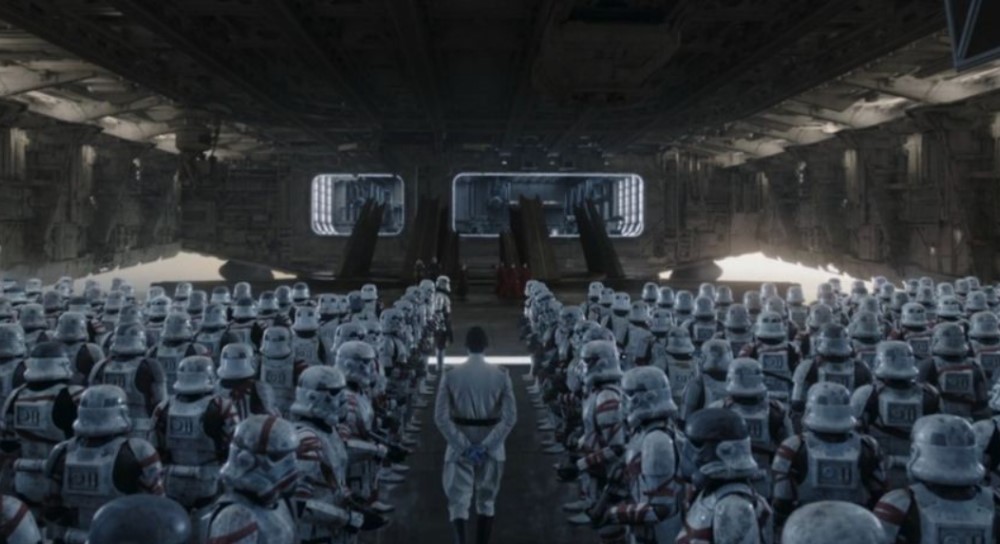 Likely conscientious of the criticism J.J. Abrams received when he structured The Force Awakens as an echo of A New Hope, Filoni wants to continue the story of Star Wars Rebels and bring back familiar faces, but does not want to merely retread past stories. How does a creator direct the impulse to expand a fictional universe? To, on the one hand, illuminate all those classic touchstones for fans while still offering them something they haven’t seen before? From where I’m sitting, it looks like Dave Filoni took inspiration from (perhaps unconsciously) George R. R. Martin’s A Song of Ice and Fire and the landmark HBO series based on his books.
Likely conscientious of the criticism J.J. Abrams received when he structured The Force Awakens as an echo of A New Hope, Filoni wants to continue the story of Star Wars Rebels and bring back familiar faces, but does not want to merely retread past stories. How does a creator direct the impulse to expand a fictional universe? To, on the one hand, illuminate all those classic touchstones for fans while still offering them something they haven’t seen before? From where I’m sitting, it looks like Dave Filoni took inspiration from (perhaps unconsciously) George R. R. Martin’s A Song of Ice and Fire and the landmark HBO series based on his books.
The White Walkers and the Night King are some of the scariest antagonists in high fantasy. And, in a more direct parallel with Ahsoka, the Red Priestesses like Melisandre (“The Red Woman”) can manipulate fire and shadow, not unlike the Nightsisters. Oh, and they can resurrect the dead. There are some key characters who benefit from the Red Priestesses’ powers. Without the Red Priestesses, the White Walkers, and dragons, The Song of Ice and Fire is a historical epic based on The War of the Roses. Martin infuses the saga of rival houses trying to outgun or outwit each other, as well as the drama of human greed and ambition, with about 15% pure fantasy elements. And it works. Each makes the other more intriguing. I could say the same of Ahsoka, only the additional fantasy elements layer on top of what fantasy we already had by way of the Force and the Jedi. Dave Filoni cranks up the magic about 15% and it revitalizes the more familiar paths of Jedi and rebels fighting an Empire.
Jon Favreau said in an interview with Entertainment Weekly that they wanted The Mandalorian Season 2 to be like Game of Thrones: “The world was really captivated by Game of Thrones and how that evolved as the characters followed different storylines — that’s very appealing to me as an audience member.” Ahsoka seems a lot more focused, but I can certainly see the conflict and characters here syncing up with many others in, oh, maybe a Mando-verse movie?
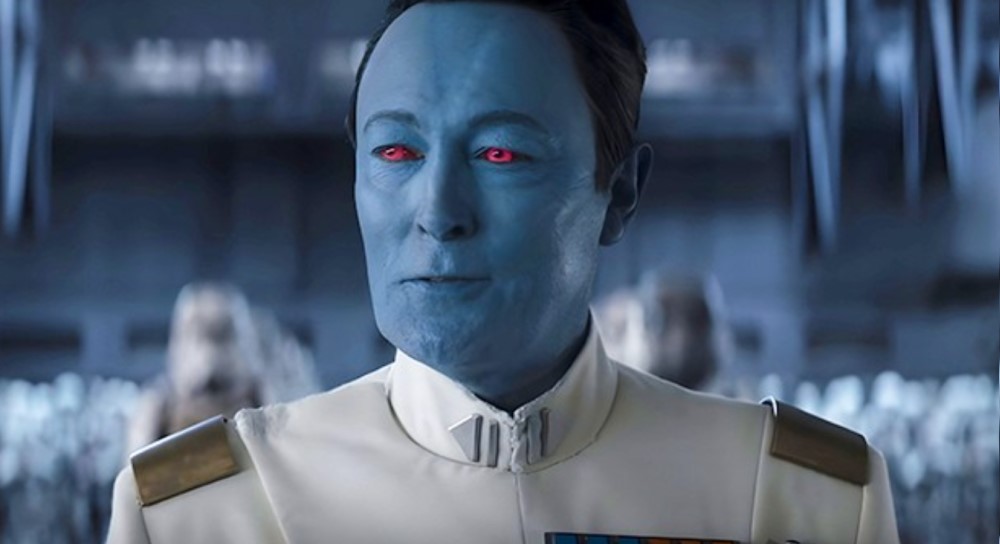 At the end of the episode, when Thrawn calls upon them to “once again” use their dark magick (so that means he’s already used it before — see the Night Troopers), they answer with “The thread of destiny demands it, Grand Admiral.” Perhaps they can see Ahsoka so clearly because there is a strong literary connection between Ahsoka and the Fates. The Greek Fates sometimes go by the name Moirai – Ahsoka’s owl familiar from animation is named Morai. THEY’RE ALL CONNECTED.
At the end of the episode, when Thrawn calls upon them to “once again” use their dark magick (so that means he’s already used it before — see the Night Troopers), they answer with “The thread of destiny demands it, Grand Admiral.” Perhaps they can see Ahsoka so clearly because there is a strong literary connection between Ahsoka and the Fates. The Greek Fates sometimes go by the name Moirai – Ahsoka’s owl familiar from animation is named Morai. THEY’RE ALL CONNECTED.
I may be overthinking all this, which could be even more hazardous if the whole point of Dathomiri witches and magick is to defy all explanation and add that instantaneous mystique. Even if I never get answers to any of the questions I’ve posed here, I recognize that what we’re seeing in Ahsoka, despite drawing inspiration from past works or tropes, is new. In spite of all the fan favorite characters returning. In spite of all the Easter eggs. Dave Filoni is doing something NEW with Star Wars. And that couldn’t be more exciting.
(This is condensed and edited – with permission – from Jen’s The Long Take review, which you can subscribe to here)
Dan Lo
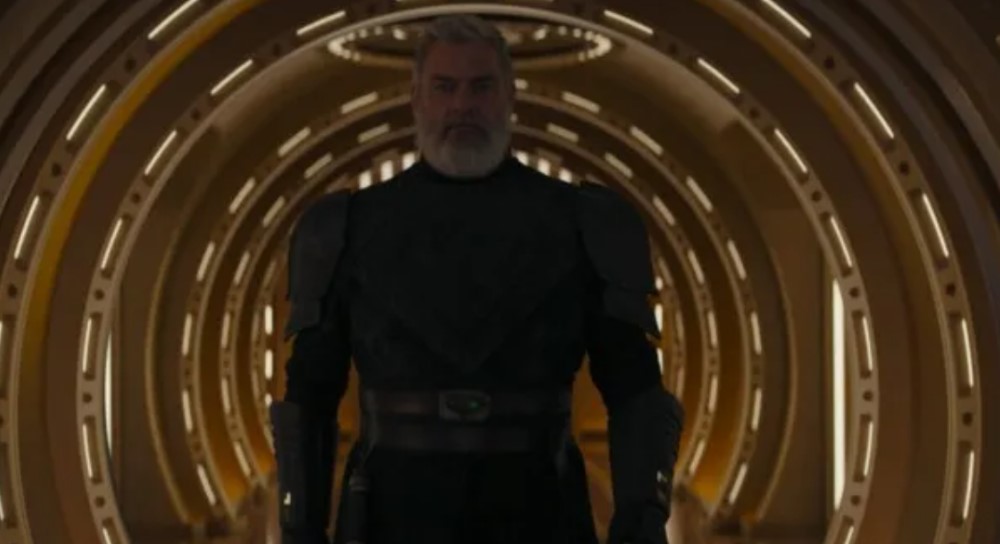 Kintsugi is the Japanese art of repairing broken pottery with a mixture of lacquer and powdered precious metals. I first heard of this term several years ago from reading the book The Story of With by Allen Arnold, recommended via social media by none other than the voice of Obi-Wan-Kenobi, James Arnold Taylor. I won’t give away its usage in the story, but it’s a concept that I find both intriguing and meaningful.
Kintsugi is the Japanese art of repairing broken pottery with a mixture of lacquer and powdered precious metals. I first heard of this term several years ago from reading the book The Story of With by Allen Arnold, recommended via social media by none other than the voice of Obi-Wan-Kenobi, James Arnold Taylor. I won’t give away its usage in the story, but it’s a concept that I find both intriguing and meaningful.
While the context is wildly different, the latest episode showcases striking examples of this artform. Or at least something like it, since we don’t know the exact materials used. From the repaired exterior of the Chimaera to Night Trooper armor, everything looks recognizable yet different at the same time. Of particular note is Thrawn’s Captain of the Guard, Enoch. He wears stormtrooper armor but the front of his helmet is mostly gone, replaced by a pair of rebuilt air-supply housings and a Roman gladiator-looking mask. What could have possibly necessitated this? Did Enoch once survive a laser blast to the face? Regardless, it all adds up to a very effective visual reminder that we are indeed far, far away.
Part six of Ahsoka has many firsts, not least of which is a first look at a completely different galaxy (could it even be ours?). While the geographical features of the planet Peridea are fairly plain, the giant Dathomiri statues give it a distinctly alien look. We also get to meet some natives: Some not-so-well-meaning bandits and the diminutive hermit crab-looking Noti whose weird-sounding dialect further enhance the unfamiliarity of the planet.
We also get to meet some Nightsisters (who aren’t named Morgan Elsbeth), whose appearances translate remarkably well into live action. Shin Hati seems to be the least enthused about meeting them. One of the Nightsisters declare that “it reeks of Jedi“, with Sabine Wren looking almost puzzled while Baylon Skoll seems slightly uneasy. The floating spheres ultimately get deployed on Sabine, leading her away to a prison cell where she once again unsuccessfully tries to use the Force. What’s going on here? It doesn’t seem entirely clear if the Nightsisters specifically sense that it’s Sabine, or if it’s simply because Morgan points her out.
And of course we finally get to see live action Grand Admiral Thrawn outside the context of trailers. I read the Thrawn trilogy as a kid but admittedly don’t remember much of it, and more recently saw the character again in Rebels. While his live action debut didn’t quite knock my socks off, I do think it’s great that we finally get to see him “in real life” over 30 years after the release of Heir to the Empire. The dramatic build up to his appearance was equal parts cool and menacing, with his Night Troopers chanting his name. He was always frustrating to watch in Rebels, constantly one step ahead of our heroes. About a decade later, his shrewdness and ambition appear to be completely intact. Perhaps even more impressively, he has successfully maintained (maybe even elevated) order and the loyalty of his troops in the midst of being stranded in a completely different galaxy with no guarantee of ever making it back home.
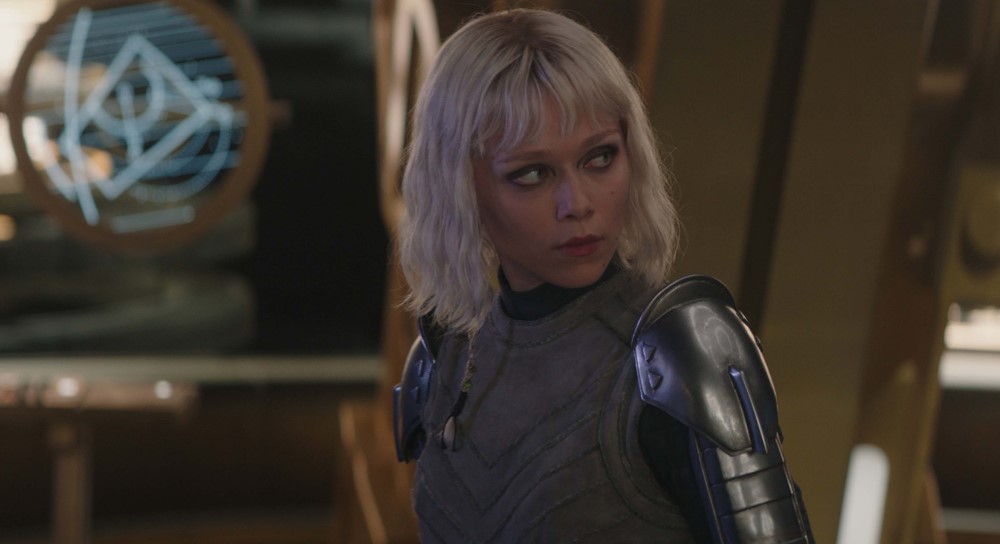 One of the most interesting aspects of this episode involves the interactions between Shin and Baylan. It could be my imagination, but there seems to be some cracks forming. Baylan previously promised power but now pivots to this being “the beginning“. Shin doesn’t seem entirely convinced, but appears to trust her master for the time being. Then shortly after Sabine is allowed to go her way to find Ezra Bridger, Thrawn tells Baylan that he may go after her which prompts Shin to object. She certainly does not look happy when Thrawn says they are to destroy both Sabine and Ezra once they are found. Shin and Baylan don’t know this yet, but Thrawn does not care whether or not they are onboard his star destroyer for the trip back home. Or maybe the joke’s on Thrawn, because the former General of the Jedi Order is not planning on leaving anyway. Later, Shin once again questions whether Peridea is where they need to be. Baylan seems to sense something that she doesn’t, although the arrival of Bandits cuts that conversation short. Who or what could possibly be calling out to him?
One of the most interesting aspects of this episode involves the interactions between Shin and Baylan. It could be my imagination, but there seems to be some cracks forming. Baylan previously promised power but now pivots to this being “the beginning“. Shin doesn’t seem entirely convinced, but appears to trust her master for the time being. Then shortly after Sabine is allowed to go her way to find Ezra Bridger, Thrawn tells Baylan that he may go after her which prompts Shin to object. She certainly does not look happy when Thrawn says they are to destroy both Sabine and Ezra once they are found. Shin and Baylan don’t know this yet, but Thrawn does not care whether or not they are onboard his star destroyer for the trip back home. Or maybe the joke’s on Thrawn, because the former General of the Jedi Order is not planning on leaving anyway. Later, Shin once again questions whether Peridea is where they need to be. Baylan seems to sense something that she doesn’t, although the arrival of Bandits cuts that conversation short. Who or what could possibly be calling out to him?
We also finally see live action Ezra too, who has since settled in with the Noti. He still doesn’t know how Sabine has found him, nor the ramifications of her “success”. Sure, Ahsoka is on the way but Thrawn is already aware and has countermeasures in place. Thrawn also mentioned the use of “dark magick”, but the context is not yet clear. I have high hopes that we will see a live action lightsaber-wielding Ezra before the end of the season.
Last but not least, who’s in the catacombs? Are we supposed to know, or is that something new? Why are they so important that they must be relocated? Being Star Wars, I can’t help but wonder if it’s for cloning-related purposes.
One thing that is for sure: The 501st is about to look very different.
Sander de Lange looks at all the reveals and easter eggs in Ahsoka – The Guide Part 6: Far, Far Away.
Brian Cameron and Paul Naylor discuss Far, Far Away on this weeks Good Morning Tatooine.
Mark Mulcaster and Mark Newbold discuss Part 6 on Making Tracks Reaction Chat: Ahsoka S1E6 – Far, Far Away.



